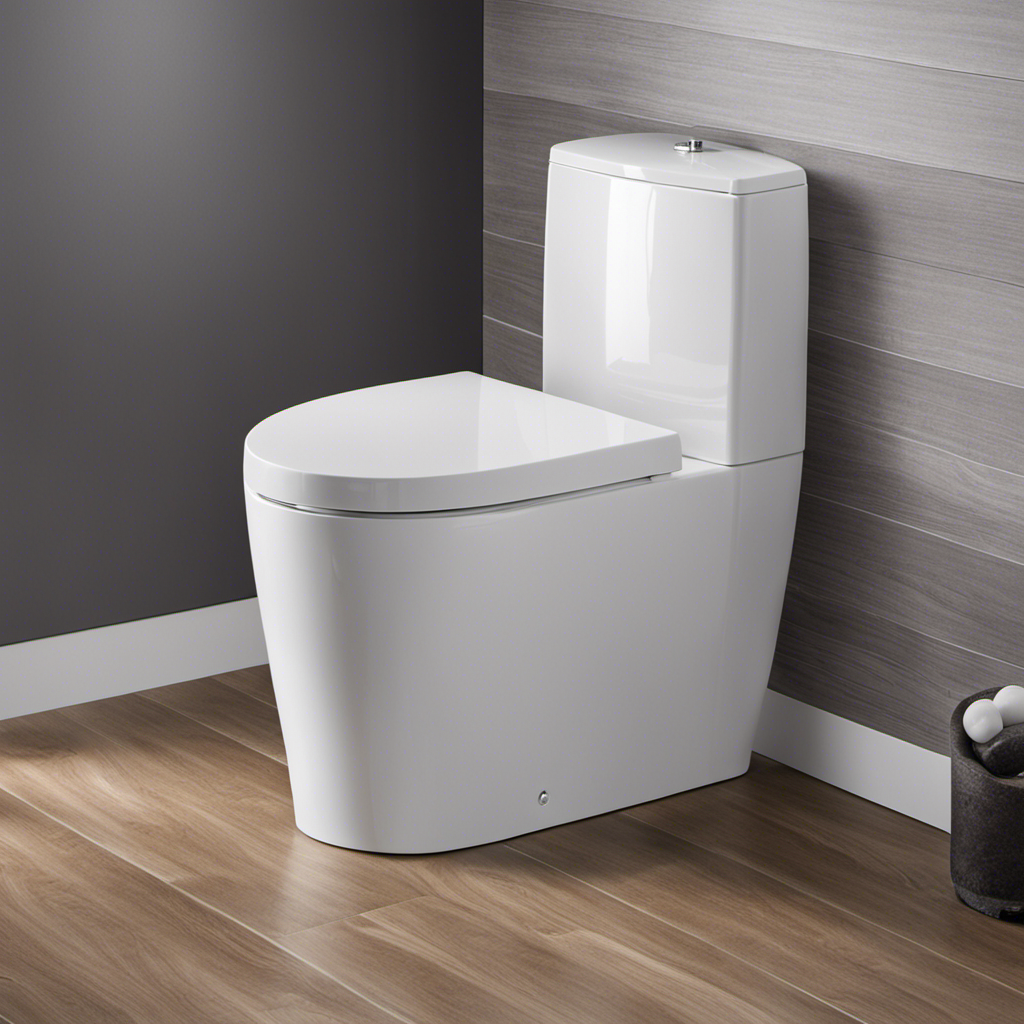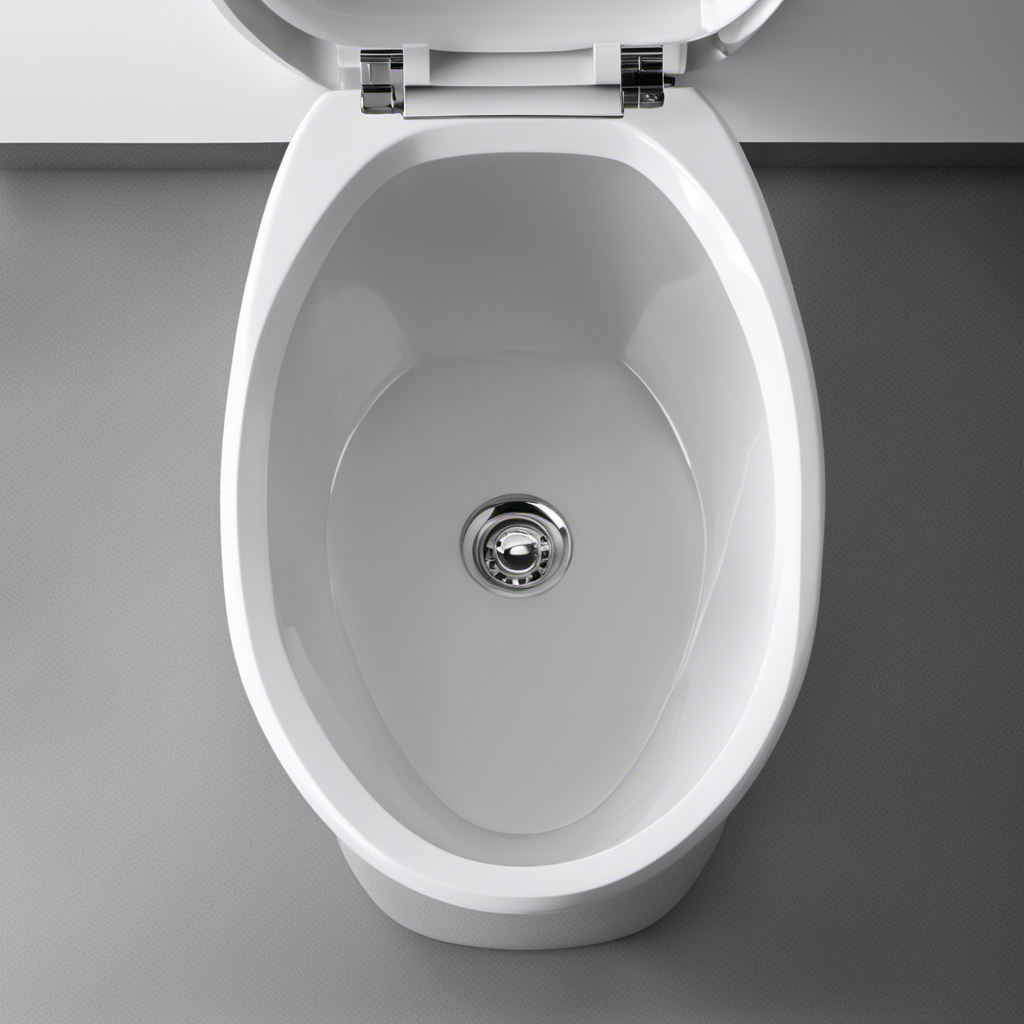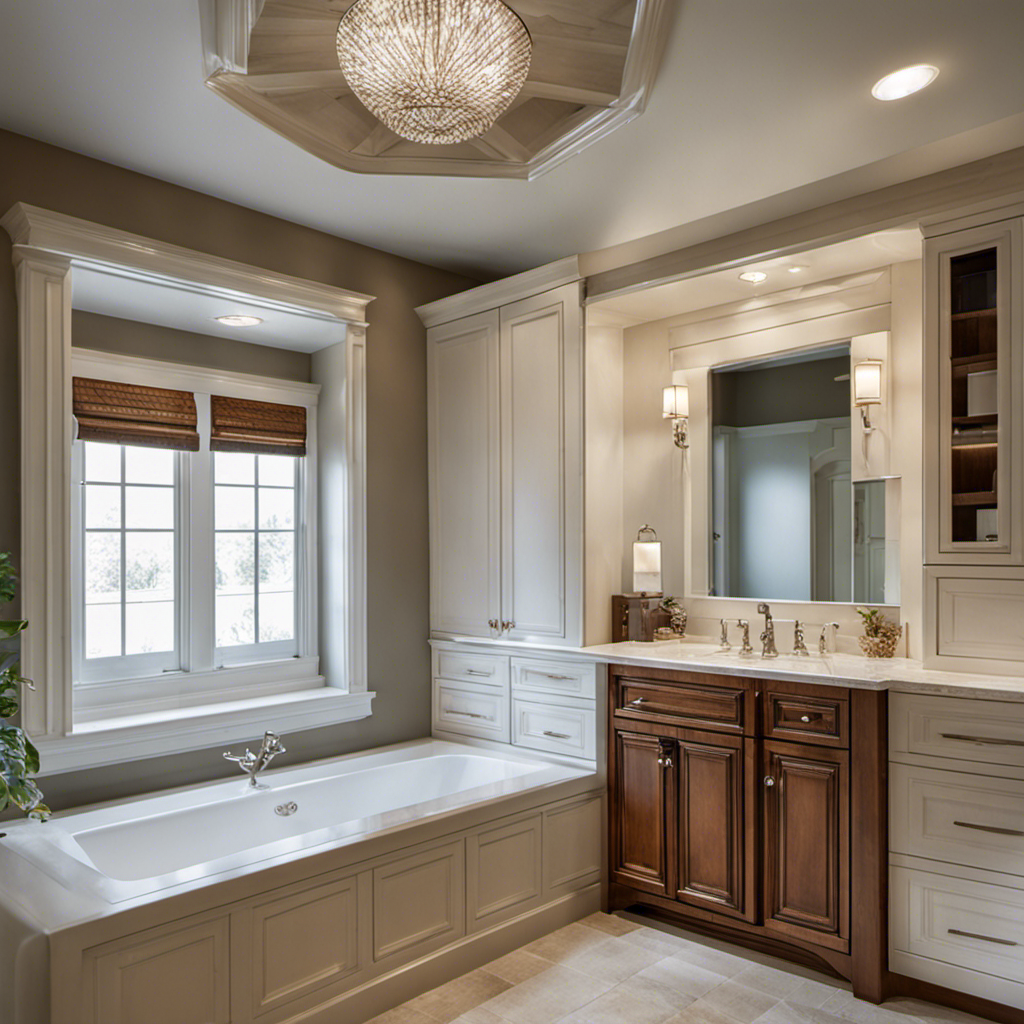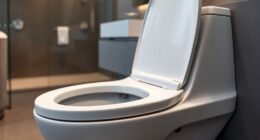When it comes to toilet flush systems, knowledge is power.
The ultimate guide to toilet flush systems and efficiency is here to empower homeowners with all the information they need to make the best choice for their bathroom.
From different types of flush systems to water efficiency options, flush mechanisms, flush performance factors, maintenance tips, installation considerations, innovative features, and cost and environmental impact, this comprehensive guide covers it all.
So sit back, relax, and get ready to become a flush system expert.
Key Takeaways
- There are various types of toilet flush systems available, including gravity flush, rear flush, pressure-assisted, dual flush, and more.
- Water efficiency is an important consideration, and options like low-flow flush, dual-flush toilets, WaterSense certified toilets, high-efficiency toilets, and smart toilets help to conserve water.
- Flush mechanisms such as flapper valve, flush valve, siphon jet, piston flush, and rim flush contribute to the effectiveness of the flush.
- Flush performance factors like MaP rating, flush power, bowl cleanliness, clog resistance, and noise level determine the overall functionality of the toilet.
Types of Toilet Flush Systems
The gravity flush system is one of the most common and traditional types of toilet flush systems. It uses gravity and siphoning action to efficiently remove waste from the bowl.
One of the pros of the gravity flush system is its simplicity and reliability. It doesn’t require any additional components or mechanisms, making it easier to maintain and repair. Additionally, it is generally less expensive compared to other flush systems.
However, a potential con of the gravity flush system is its lower flushing power compared to other systems like pressure-assisted or rear flush systems. This can sometimes lead to clogs or the need for multiple flushes.
Overall, the gravity flush system is a popular choice due to its efficiency and cost-effectiveness.
Water Efficiency Options
Dual-flush toilets give users the option to choose between a full or partial flush, conserving water. This water-saving technology is becoming increasingly popular as people seek to reduce their environmental impact.
Choosing the right flush system can make a significant difference in water consumption. Water-saving technologies include low-flow flushes, dual-flush toilets, WaterSense certified toilets, high-efficiency toilets, and smart toilets.
Low-flow flushes reduce water usage with a smaller flush volume, while dual-flush toilets allow users to choose between a full or partial flush. WaterSense certified toilets meet EPA standards for water efficiency, and high-efficiency toilets utilize advanced flushing technology to reduce water consumption. Smart toilets incorporate sensors to optimize water usage based on user needs.
Flush Mechanisms Explained
Users can choose from various flush mechanisms, such as flapper valves, flush valves, siphon jets, piston flushes, and rim flushes. Each mechanism has its own benefits and drawbacks. Flapper valves are commonly found in traditional toilets and are cost-effective, but they may require frequent maintenance and can be prone to leaks. Flush valves, on the other hand, are durable and efficient, but they can be more expensive to install. Siphon jet flush systems utilize powerful suction to remove waste effectively, while rim flush systems direct water around the rim of the bowl for thorough cleaning. The siphon jet flush system is known for its strong flushing performance, while the rim flush system provides better bowl cleanliness. It’s important for users to consider their priorities and budget when choosing the right flush mechanism for their toilets.
| Flush Mechanism | Benefits | Drawbacks |
|---|---|---|
| Flapper valve | Cost-effective, common | Requires frequent maintenance, prone to leaks |
| Flush valve | Durable, efficient | More expensive to install |
| Siphon jet | Strong flushing performance | Limited bowl cleanliness |
| Piston flush | Efficient flushing | Less common, may require specialized parts |
| Rim flush | Thorough bowl cleaning | Less powerful flush |
Evaluating Flush Performance
When evaluating flush performance, it is important to consider factors such as MaP rating, flush power, bowl cleanliness, clog resistance, and noise level.
-
MaP rating:
-
Measures the toilet’s ability to remove waste effectively.
-
Higher MaP ratings indicate better flushing performance.
-
Flush power:
-
Determines the force and speed of the flush.
-
Optimal flush power ensures efficient waste removal.
-
Bowl cleanliness:
-
Evaluates how well the toilet cleans the bowl after flushing.
-
A clean bowl indicates effective waste removal.
-
Clog resistance:
-
Indicates the toilet’s ability to prevent clogs.
-
Clog-resistant toilets minimize the risk of blockages.
-
Noise level:
-
Determines the sound produced during flushing.
-
Lower noise levels contribute to a more comfortable bathroom experience.
When optimizing flush power, it is crucial to select a toilet with a high MaP rating, strong flush power, effective bowl cleaning capabilities, clog resistance, and minimal noise production.
Maintaining Your Flush System
Regular maintenance is essential for ensuring optimal performance and longevity of the flush system. Without proper maintenance, common flush system problems may arise, leading to issues with flushing efficiency and water waste.
One common problem is a weak flush, which could be caused by a clogged jet or a worn-out flapper valve. Another issue is a running toilet, often caused by a faulty fill valve or a leaky flapper. Additionally, a phantom flush, where the toilet randomly flushes on its own, can be caused by a flapper that doesn’t seal properly.
To troubleshoot these problems, it is important to regularly inspect and clean the flush system components, such as the flapper valve, fill valve, and siphon jet. By addressing these common issues through proper maintenance and troubleshooting, the flush system can continue to function efficiently and effectively.
Installation Considerations
During installation, it is important to consider factors such as rough-in size, floor mount vs. wall mount options, water supply line connection, wax ring seal placement, and toilet flange securing to ensure a proper and functional flush system.
Toilet flange installation:
- Measure the rough-in size accurately to determine the distance between the wall and the toilet drain. This ensures the toilet fits properly and aligns with the plumbing system.
- Secure the toilet flange to the floor using screws or bolts. This provides stability and prevents leaks or movement during use.
Proper installation of the toilet flange is crucial for a reliable and efficient flush system. Accurate measurement of the rough-in size ensures a proper fit, while secure installation of the flange prevents leaks and instability.
Innovations in Flush Systems
LED lighting provides enhanced visibility within the toilet bowl in modern flush systems. This innovative feature ensures that users can easily see and clean the bowl, improving hygiene. Along with LED lighting, flush systems have seen advancements in self-cleaning technology and smart toilet features. Self-cleaning toilets utilize special coatings or cleaning solutions to keep the bowl clean and reduce the need for manual cleaning. Smart toilet features incorporate sensors and automation to optimize water usage, provide automatic lid opening and closing, and even include bidet functionality for enhanced hygiene. These advancements in flush system technology offer convenience, efficiency, and improved cleanliness for users. With self-cleaning technology and smart features, maintaining a clean and hygienic toilet has never been easier.
| Flush System Innovations |
|---|
| Self-cleaning technology |
| Smart toilet features |
| LED lighting |
Understanding the Cost and Environmental Impact
The cost and environmental impact are important considerations when evaluating different types of toilet flush systems.
When it comes to toilet flush system affordability, there are various factors to consider. Some flush systems may have a higher initial purchase price but offer water savings in the long run, resulting in lower water bills. Additionally, maintenance and repair costs should be taken into account.
Energy consumption is another cost-related factor, as some flush systems may require electricity for power flush or smart functions.
On the other hand, sustainable toilet materials play a crucial role in reducing the environmental impact. Opting for toilets made from eco-friendly materials helps minimize waste and carbon footprint, contributing to a more sustainable future.
Frequently Asked Questions
How Do I Choose the Right Flush System for My Specific Bathroom Needs?
When choosing a flush system for their bathroom, individuals should consider water-saving options. Factors to consider include water efficiency, flush performance, maintenance requirements, and installation considerations such as rough-in size and floor mount vs. wall mount.
Can I Upgrade My Existing Toilet to a More Efficient Flush System?
Yes, one can upgrade their existing toilet to a more efficient flush system. Upgrading options include installing dual flush systems or high-efficiency toilets, which offer benefits such as water savings and improved performance.
Are There Any Downsides to Using a Dual Flush System?
Using a dual flush system can decrease water usage, but there are downsides. Alternative flush system options include gravity, pressure-assisted, and rear flush systems, each with their own benefits and drawbacks.
What Are Some Common Signs That My Flush System Needs Maintenance or Repair?
Some common signs of flush system issues include weak flushing, frequent clogs, and water leaks. To maintain and repair a toilet flush system, regular flapper replacement, tank cleaning, jet cleaning, valve adjustment, and leak detection are recommended.
Are There Any Safety Considerations When Installing a New Flush System?
Safety precautions should be taken when installing a new flush system. It is important to follow proper installation guidelines, ensure secure connections, and use the appropriate tools. Additionally, it’s crucial to shut off the water supply and wear protective gear to prevent accidents.
Conclusion
In conclusion, this ultimate guide to toilet flush systems and efficiency has covered everything you need to know about this often overlooked but essential feature of any bathroom.
From the different types of flush systems to the various water efficiency options available, we’ve delved into the nitty-gritty details of how these mechanisms work.
We’ve explored the importance of evaluating flush performance and provided maintenance tips to keep your flush system running smoothly.
We’ve also discussed installation considerations and the exciting innovations in flush system technology.
Lastly, we’ve considered the cost and environmental impact of these systems.
So, whether you’re a homeowner looking to upgrade your bathroom or a plumbing enthusiast seeking to expand your knowledge, this guide has provided a comprehensive overview to help you make informed decisions.
Now go forth and conquer the world of toilet flush systems with confidence!










